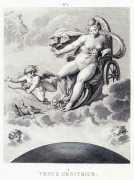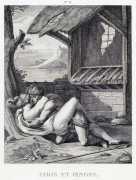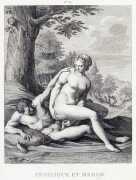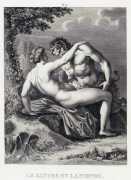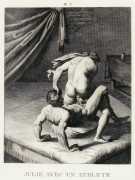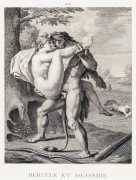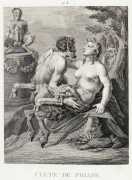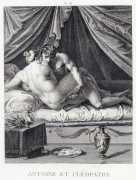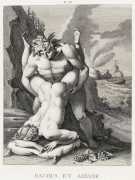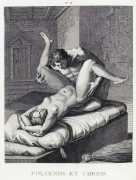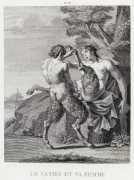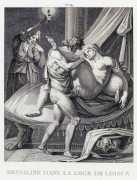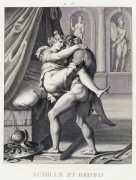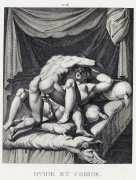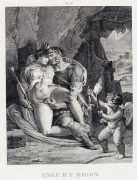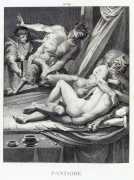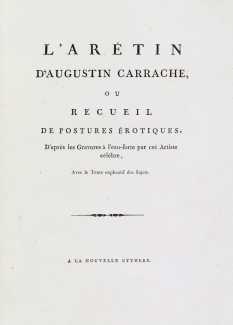 L’Arétin d’Augustin Carrache, ou recueil de postures érotiques, d’après les gravures à l'eau-forte par cet artiste célèbre, avec le texte explicatif des sujets (The Aretino by Agostino Carracci, or a Collection of Erotic Postures after the Etchings by the Famous Artist, with the Explanatory Text of the Subjects), which was published in Paris in 1798, was an important milestone in the history of these infamous pictures. You can find the full history of the Aretino/Raimondi I Modi here; suffice it to say that by the end of the eighteenth century any series of paintings or etchings on the theme of sexual positions had become popularly known as ‘Aretinos’.
L’Arétin d’Augustin Carrache, ou recueil de postures érotiques, d’après les gravures à l'eau-forte par cet artiste célèbre, avec le texte explicatif des sujets (The Aretino by Agostino Carracci, or a Collection of Erotic Postures after the Etchings by the Famous Artist, with the Explanatory Text of the Subjects), which was published in Paris in 1798, was an important milestone in the history of these infamous pictures. You can find the full history of the Aretino/Raimondi I Modi here; suffice it to say that by the end of the eighteenth century any series of paintings or etchings on the theme of sexual positions had become popularly known as ‘Aretinos’.
This series of twenty engravings for L’Arétin is Coiny’s best-known work, but the title is very misleading. The ‘celebrated artist’ referred to is indeed Coiny, but the reference to the Italian renaissance painter Agostino Carracci (1557–1602) suggests that Coiny was working from a complete series of Agostino’s paintings. In reality, all that Coiny had to work from was six anonymous prints engraved by the Antwerp engraver Pieter de Jode the Elder (1570–1634) which were said to have originated from Caracci paintings, none of which have survived.
Thus these twenty plates, inspired and made slightly more palatable by references to the loves of the gods and goddesses, come almost enirely from Coiny’s own imagination. It is quite likely that Coiny also wrote the texts.
The Coiny-illustrated L’Arétin was published ‘à la Nouvelle Cythère’, an imprint used by the Paris publisher Pierre Didot. Cythère is the Greek island of Kithera, which for the audience of the book would have suggested an exotic and appropriate home for the gods and mythical creatures of the illustrations.


